Strip-till cultivator brings big maize establishment savings
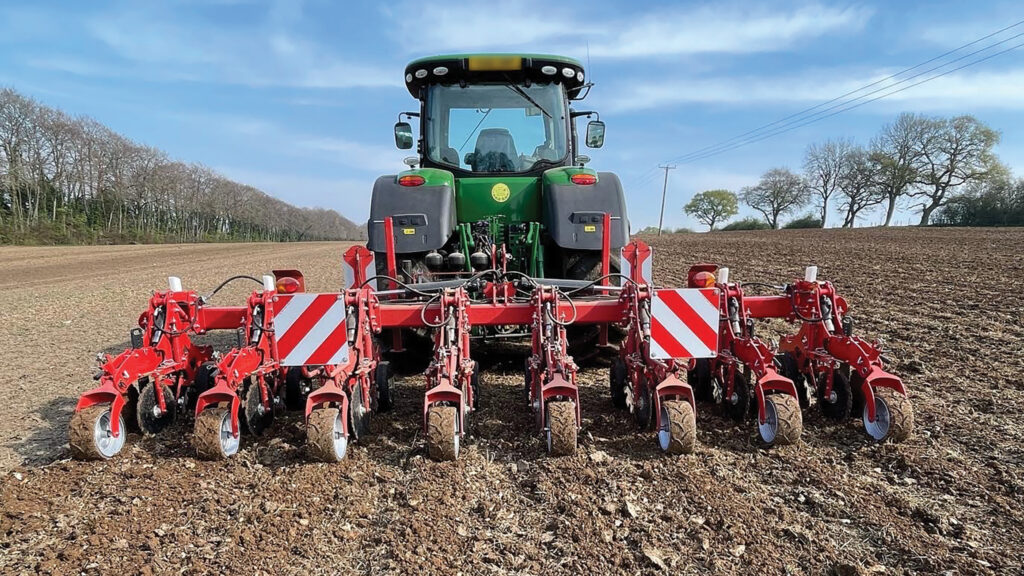 © Will Cheyney
© Will Cheyney The use of a strip-till cultivator has halved the number of maize establishment passes and more than doubled work rate at a Hampshire arable farm – all while maintaining yields.
Father-and-son duo Peter and Will Cheyney were looking to step away from traditional maize cultivations and move to a lower disturbance system.
Since 2018, the pair successfully shifted towards a direct-drilling approach across the wider arable rotation growing winter wheat, oilseed rape and rye and wanted maize to follow suit.
See also: Why a long-term no-tiller is ploughing again on heavy soils
But, as expected maize proved a challenging crop to transition, as establishment very much relies on sufficient soil movement.
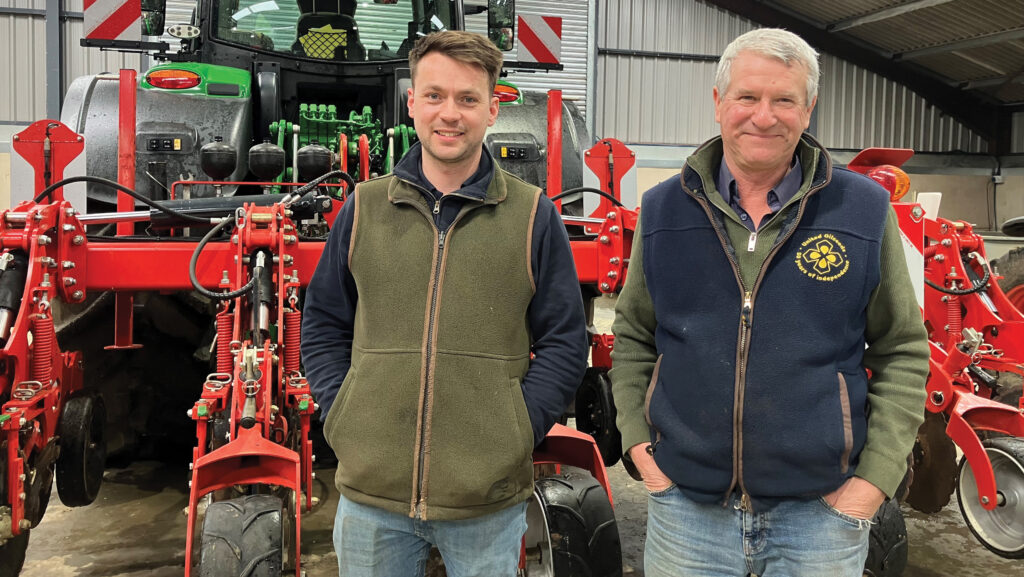
Will and Peter Cheyney © MAG/Emma Gillbard
After trialling subsoilers and various other cultivators, Will came across the Kverneland Kultistrip 6000F strip-till cultivator back in 2021.
The Kultistrip is now coming into it’s fifth season at Hyde Farm, near Basingstoke.
It has revealed promising results, with significant savings on tillage costs and, importantly, no yield penalty when compared to the farm’s previous farm standard.
Tillage savings
The 6m cultivator works by only preparing the soil where the maize is to be planted.
Based on 75cm row spacings, up to 70% of the soil surface is not cultivated, significantly improving soil structure and protecting soil from erosion.
“Since we started using the machine in 2021, we’re finding the soil much easier to travel on.
The friability of the soil is increasing, and we’re seeing an improvement year-on-year,” says Will.
The previous farm standard was one pass of a 3m Simba DTX cultivator, a pass with a set of spring tines and a further pass with a set of discs.
“We are able to cover significantly more ground with the strip-till.
“We would previously do 2.5ha/hour with the Simba, 5ha/hour with the spring tine and 5ha/hour with the discs, but now this has increased to 6ha/hour with the strip-till.
“This has enabled us to double the work rate and half fuel use. Plus, we have the benefits of savings on depreciation and labour costs,” says Will.
Cover crops
The strip-till cultivator is used once in the autumn post-cereal harvest and again in the spring, ahead of drilling.
During the first autumn pass, a seed hopper is attached to the cultivator, which enables an overwinter cover crop mix to be planted.
Working the soil to a depth of 20cm, a combination of radish, buckwheat, clover, phacelia, and linseed is sown.
A flock of the neighbour’s sheep then graze the covers in the spring before spraying off with glyphosate.
Next, a dose of digestate is applied, before going in with the strip-till once more – this time working to a shallower depth of 10-15cm.
Peter and Will grow about 50-80ha of maize, depending on the rotation, with crops destined for a local anaerobic digestion plant.
Maize is an effective crop to grow, particularly for blackgrass control and workload management.
“Some of our best winter wheat yields follow maize,” says Peter. Average maize yields are about 32t/ha freshweight with highs of up to 45t/ha.
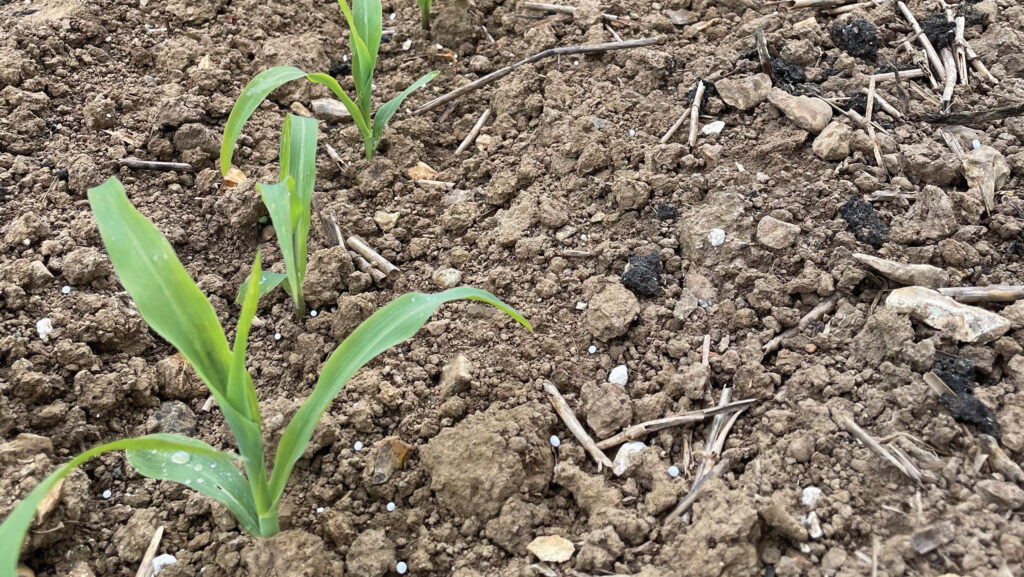
© Will Cheyney
Strategic machinery share
A machinery share in place with Will’s cousin sees Will strip-till 150ha of additional maize ground for the cousin’s dairy farm in return for their Amazon EDX 6000-2c precision maize drill.
Maize at Hyde Farm is usually drilled early to mid-April, into warming soils.
Peter and Will aim to go in with a pre-emergence herbicide as soon as possible.
“If we miss the pre-emergence timing, we usually regret not applying the spray, rather than applying it,” says Will.
A total of 50kg N/ha of digestate is applied ahead of drilling, with a total of 145kg/ha of nitrogen applied over the growing season.
This consists of 14kg N/ha applied down the spout at drilling, in the form of di-ammonium phosphate and 75kg N/ha of bagged fertiliser, including 57kg/ha of sulphur.
“Granular applications are done no later than the two-leaf stage,” says Will.
Next steps
Going forwards, Will is considering applying digestate into the cultivated strips, but he says this is very much dependent on the weather.
“If it is a wet season, for example, we do not want more liquid going into the strips as this would limit establishment.
“In a dry season, however, if we could target the digestate into these areas it would be beneficial.”
One negative, however, is the compaction risk associated with digestate applications via the large Claas Xerion tanker.
“We have looked into using an umbilical system and nurse tanks instead to limit travel, but on our flinty soils we find the pipes catch,” notes Will.
The pair hope to continue to build on their soil focused approach – reducing cultivations, cover cropping and integrating livestock.
European corn borer
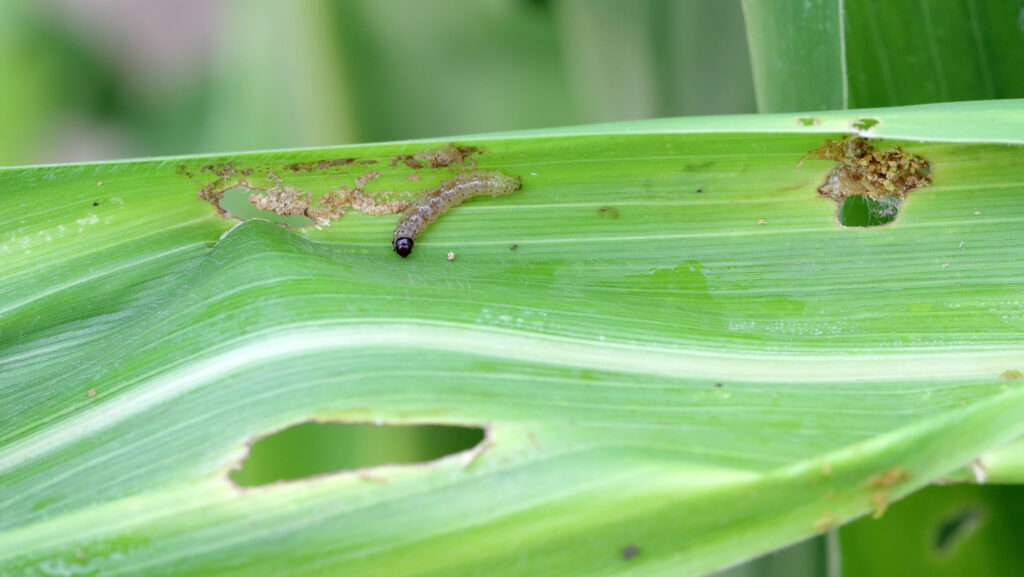
© AdobeStock
Although not native to the UK, populations of the European Corn Borer (Ostrinia nubilalis) are becoming more prominent in certain regions as maize becomes a more prevalent crop.
Spread of the pest is generally limited to specific regions, but an increase in maize area, particularly game covers, provides more habitat for the pest to overwinter and thrive.
Peter and Will Cheyney have identified the pest in maize crops at their Hampshire farm, particularly following a wet September, where crops brackled in some areas.
“With increasing maize in this area and a shoot next door, which has maize game cover standing into February, there’s potential for carry over,” says Will.

© AdobeStock
Andrew Cook, maize product manager for KWS, explains how the corn borer overwinters as a pupa in crop debris or soil, emerging as an adult moth in late spring or early summer.
Larvae cause the primary damaging, tunnelling into plant stems and ears which weakens the crop, making it susceptible to brackling.
This can significantly reduce yields and impact kernel quality.
“The corn borer has been present in central Europe for years, but they still successfully grow hundreds of thousands of hectares of maize.
“It’s not an economic disaster and there are ways around it,” says Andrew.
“By simply inverting the soil through cultivations, corn borer population can be reduced by 75%, burying pupae to reduce chances of the pest overwintering,” he says.
Insecticides can be used, but optimum timing is challenging as it occurs during larvae hatch.
A high-clearance sprayer is also required.
Biological control is used in Europe and could be useful in the UK in future, he adds.
UK maize area
Andrew Cook, KWS maize product manager, estimates 75% of maize grown in the UK is for livestock, 20% is for anaerobic digestion plants and 5% is for grain.
He notes maturity as the big driver in variety choice, as growers look for earlier harvests to reduce soil compaction and allow for autumn crop establishment.
The Cheyney family grow the varieties Reo, Exelon and Calvini, which have a FAO rating of 170.
Kverneland Kultistrip strip-till
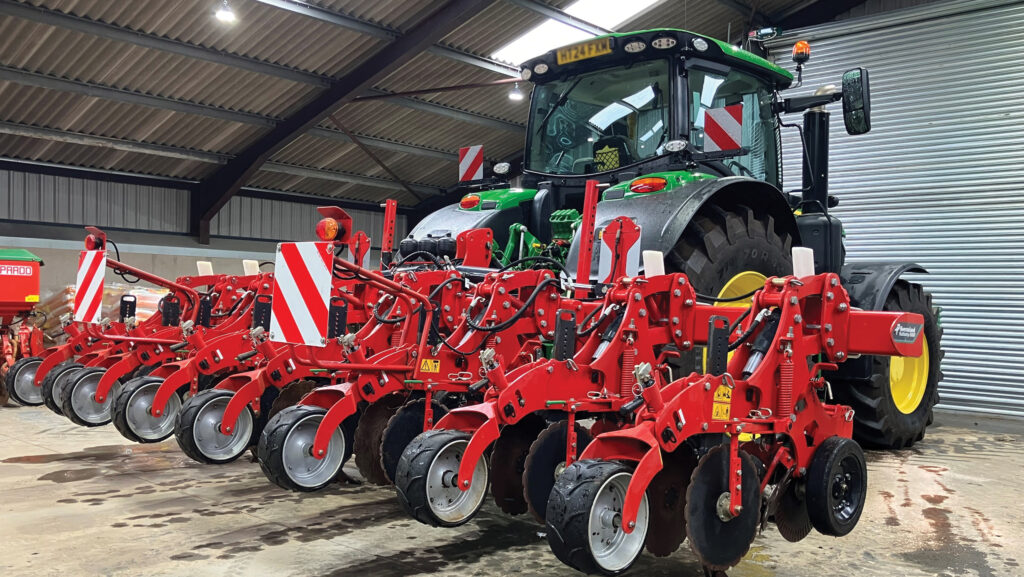
© MAG/Emma Gillbard
The Kverneland Kultistrip strip-till cultivator has a set of front cutting discs, trash wheels, loosening tines, side blades and rear press wheels.
It is available in 3m, 4.5m and 6m widths.

